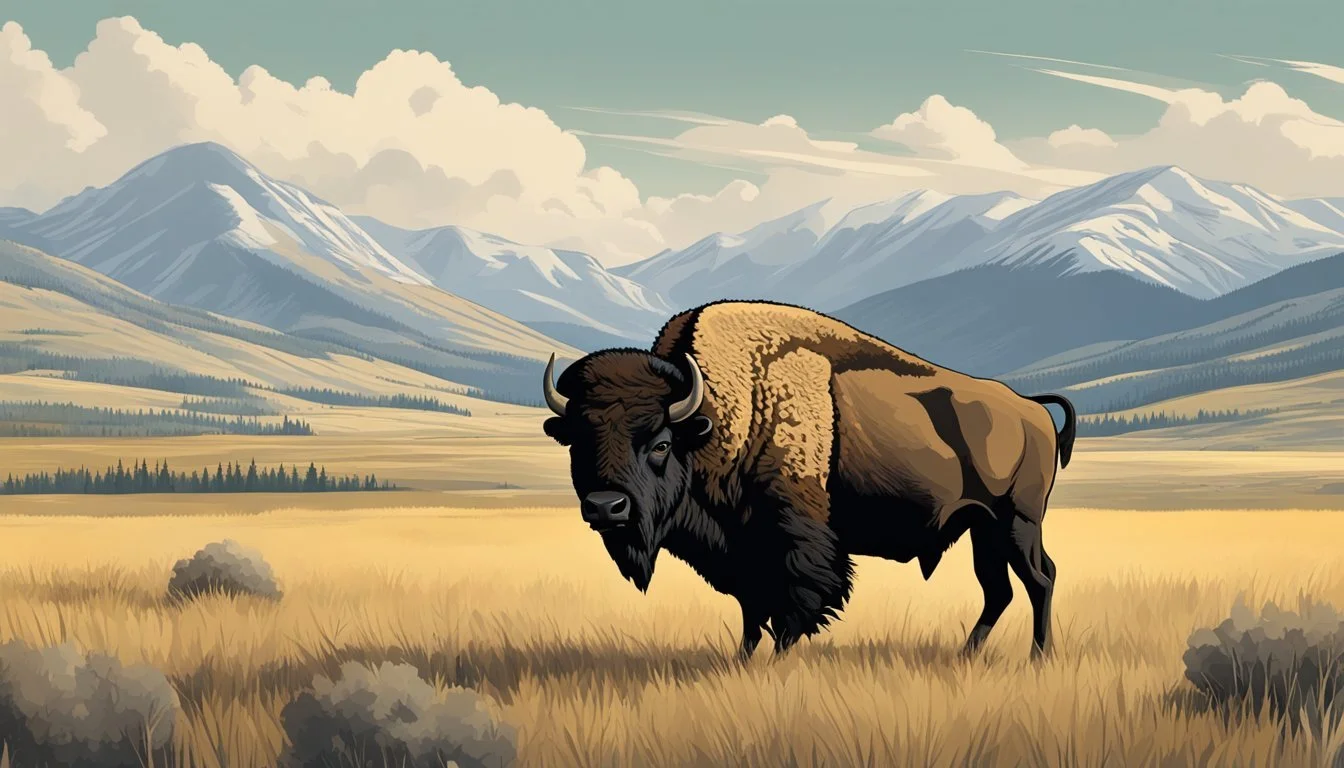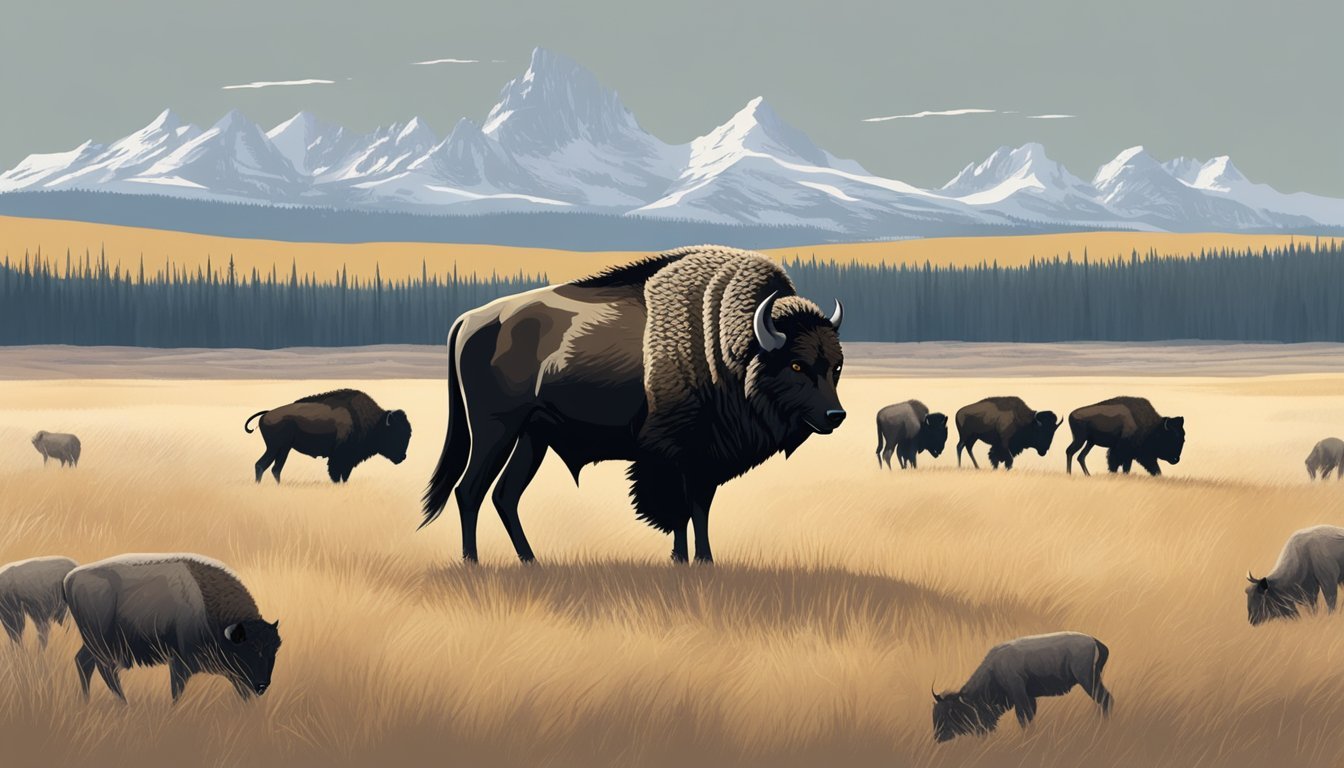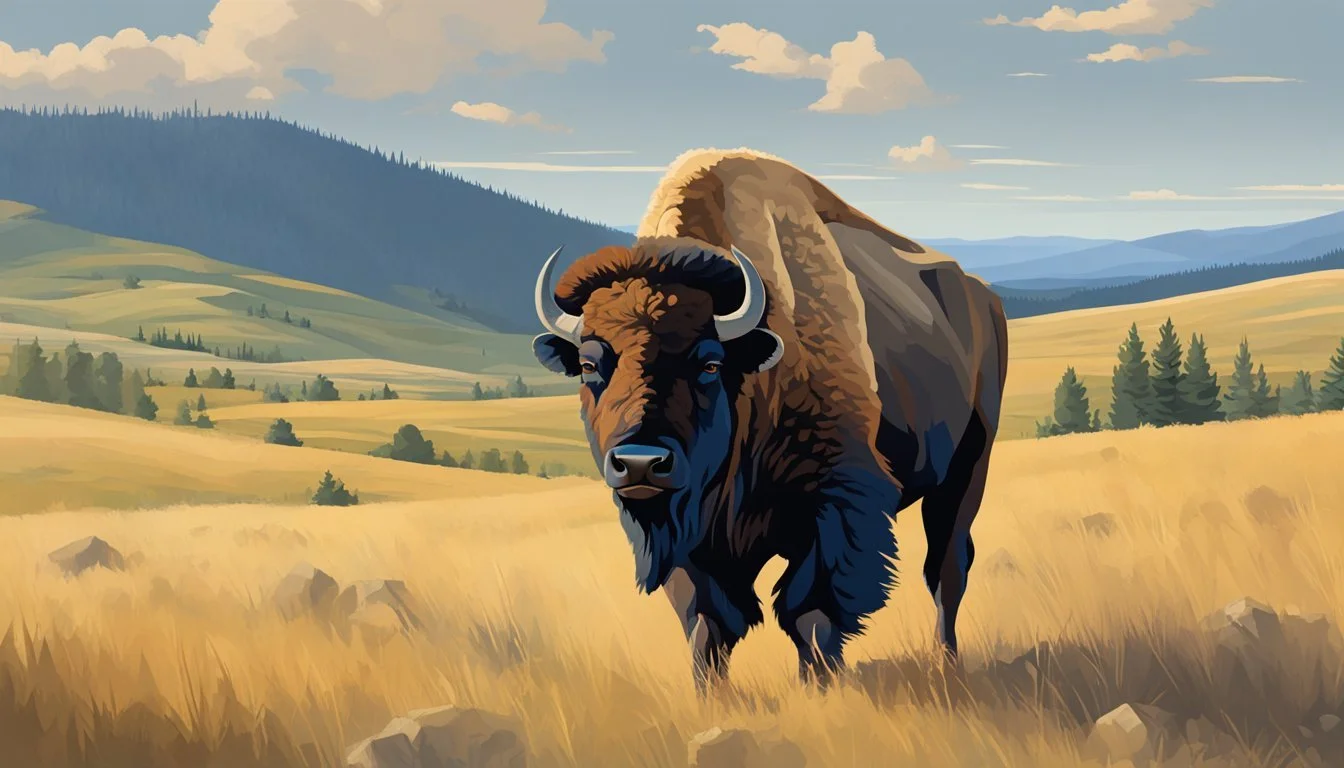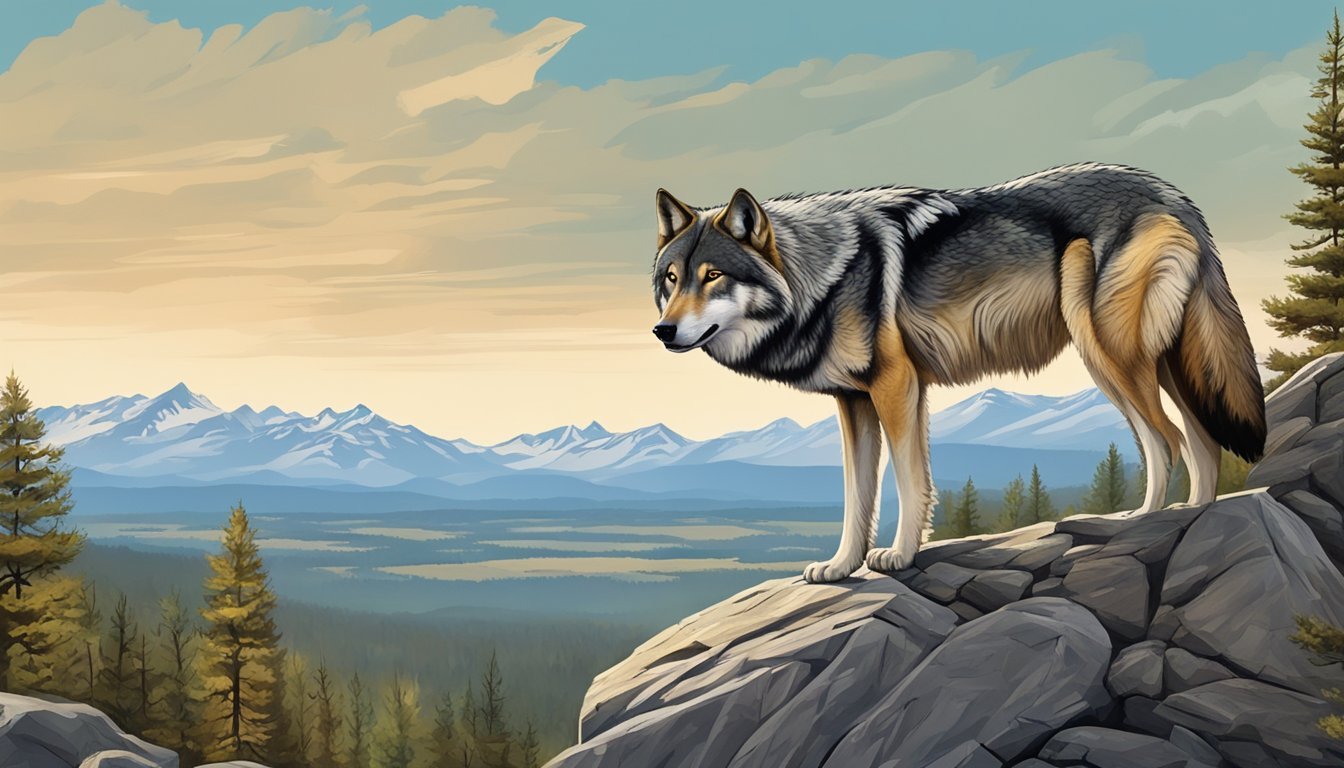Yellowstone's Portrayal of Power Dynamics in Rural Montana
A Study of Ranching Culture and Political Influence
Yellowstone, the hit TV series created by Taylor Sheridan, offers a gripping portrayal of power dynamics in rural Montana. Set against the backdrop of the sprawling Yellowstone Ranch, the show delves into the complex world of land ownership, family loyalty, and political maneuvering. The series expertly captures the tensions between traditional ranching culture and modern economic pressures, highlighting the challenges faced by rural communities in maintaining their way of life.
The Dutton family, led by patriarch John Dutton, serves as a microcosm for the larger power struggles in Montana's ranching country. Their battles with developers, Native American tribes, and government officials reflect real-world conflicts over land use and resource management. Sheridan's writing brings these issues to life, drawing viewers into the intricate web of relationships and rivalries that shape the fictional Yellowstone County.
While the show takes creative liberties with its portrayal of rural Montana, it taps into genuine concerns and aspirations of the region's residents. The series has sparked increased interest in Montana's landscapes and ranching culture, attracting tourists and raising awareness about the state's unique blend of natural beauty and human history. Through its compelling storytelling, Yellowstone has brought the complexities of rural Montana's power dynamics to a global audience.
Concept and Creation
Yellowstone emerged from Taylor Sheridan's desire to explore the complexities of modern ranching and power dynamics in rural Montana. The show's concept blends Western themes with contemporary issues, creating a unique portrayal of the American West.
Origin and Inspiration
Taylor Sheridan drew inspiration from his own experiences growing up on a ranch in Texas. He aimed to depict the challenges faced by ranching families in the 21st century, including land disputes, economic pressures, and cultural shifts. Sheridan's background in acting and screenwriting informed his approach to crafting Yellowstone's narrative.
The show's setting in Montana was chosen for its rugged landscapes and rich history of ranching. Sheridan conducted extensive research on the region's geography, wildlife, and social dynamics to ensure authenticity in the series' portrayal.
Taylor Sheridan's Vision
Sheridan envisioned Yellowstone as a modern Western that would explore themes of family, legacy, and power. He wanted to create a show that would resonate with audiences while shedding light on lesser-known aspects of rural American life.
The creator's vision extended beyond Yellowstone itself, leading to the development of prequels like 1883 and 1923. These series expand on the Dutton family history and provide additional context to the main show's events.
Paramount Network supported Sheridan's ambitious project, recognizing its potential to capture viewers' attention. The network's commitment allowed for high production values and the recruitment of a star-studded cast.
Setting the Scene
Yellowstone's vivid portrayal of Montana's landscapes and ranching culture forms the backdrop for its intense power struggles. The show's carefully chosen filming locations and attention to detail create an authentic representation of rural life in the American West.
Depiction of Montana
Yellowstone captures Montana's rugged beauty with sweeping shots of vast plains, towering mountains, and pristine rivers. The series showcases the state's diverse terrain, from lush forests to arid badlands. This visual feast serves as more than just scenery - it becomes a character in its own right, influencing the plot and characters' motivations.
Montana's harsh climate and unpredictable weather are also prominently featured. Scenes of characters braving blizzards or sweltering heat emphasize the challenges of ranch life. The show's creators pay meticulous attention to seasonal changes, accurately depicting Montana's dramatic shifts from winter to summer.
Local wildlife, including bears, wolves, and bison, make frequent appearances. These encounters highlight the delicate balance between human development and nature conservation in the region.
Chief Joseph Ranch as Dutton Ranch
The real-life Chief Joseph Ranch in Darby, Montana, serves as the iconic Dutton Ranch in Yellowstone. This working cattle ranch spans 2,500 acres and boasts a 6,000 square foot lodge built in 1917. Its selection as the primary filming location adds authenticity to the series.
The ranch's stunning architecture and period-appropriate details transport viewers to a bygone era of Western ranching. Scenes filmed in and around the main house showcase intricate woodwork, antique furnishings, and panoramic views of the Bitterroot Valley.
The property's vast pastures, horse corrals, and cattle pens provide a genuine backdrop for the show's ranching scenes. This attention to detail helps viewers immerse themselves in the Duttons' world.
Significance of Filming Locations
Yellowstone's creators strategically chose filming locations across Montana and Utah to capture the essence of the American West. These carefully selected sites contribute to the show's authenticity and visual appeal.
Key locations include:
Paradise Valley: Provides breathtaking mountain vistas
Bitterroot Valley: Offers picturesque ranch settings
Missoula: Serves as a backdrop for urban scenes
Utah's Salt Lake City area: Doubles for some Montana locations
The diverse filming locations allow the show to portray various aspects of Montana life, from isolated ranches to small towns and growing cities. This range of settings helps illustrate the complex dynamics between rural traditions and encroaching modernization.
By filming on-location, Yellowstone creates a tangible sense of place that resonates with viewers and underscores the characters' deep connection to the land.
The Dutton Family Saga
The Dutton family's complex relationships and power struggles drive the narrative of Yellowstone. Their legacy spans generations, shaping the landscape of rural Montana and the series' core conflicts.
Patriarch John Dutton
John Dutton stands as the formidable head of the Dutton clan. He fiercely protects the family's vast ranch, using his influence and cunning to maintain control. John's leadership style blends traditional values with ruthless pragmatism.
His decisions often put him at odds with his children and local authorities. John's unwavering commitment to preserving the ranch shapes every aspect of the family's life. He faces challenges from developers, Native American tribes, and even his own offspring.
Family Dynamics and Relationships
The Dutton family operates under a complex web of loyalty, resentment, and shared history. Each member plays a distinct role in maintaining the ranch's operations and navigating external threats.
Kayce, the youngest son, struggles between his duties to the ranch and his own family. Rip Wheeler, though not a Dutton by blood, holds a pivotal position as John's right-hand man. The ranch hands form an extended family, bound by a code of loyalty to the Duttons.
Tensions frequently arise as individual ambitions clash with family obligations. These conflicts test the strength of familial bonds and the Duttons' ability to present a united front against external pressures.
Beth and Jamie: Sibling Rivalry
Beth and Jamie Dutton's relationship exemplifies the most volatile sibling dynamic in the series. Their rivalry stems from deep-seated childhood trauma and competing desires for their father's approval.
Beth, known for her sharp wit and aggressive tactics, often clashes with Jamie's more calculated approach. Their confrontations range from verbal sparring to outright sabotage of each other's efforts.
Jamie's quest for independence and political aspirations frequently put him at odds with the family's interests. Beth's unwavering loyalty to John and the ranch fuels her animosity towards Jamie. Their ongoing conflict adds a layer of internal strife to the Duttons' already precarious position.
Themes of Power and Control
The Yellowstone TV series masterfully portrays complex power dynamics in rural Montana through its characters and storylines. These themes manifest in the structure of ranching, personal relationships, and the connection to the land.
Ranching as a Power Structure
Ranching forms the backbone of power in Yellowstone's Montana. The Dutton family's vast ranch serves as a symbol of their influence and authority. John Dutton, as the patriarch, wields significant control over local politics and economics. His position as a major landowner grants him leverage in disputes with government officials and developers.
The series showcases how ranching dynasties maintain their power through generational wealth and deep-rooted connections. Smaller ranchers often find themselves at the mercy of larger operations, creating a hierarchical system within the ranching community.
Loyalty and Betrayal
Loyalty is a currency in Yellowstone's world, often determining who holds power. The Dutton family demands unwavering allegiance from their ranch hands and allies. This loyalty is tested repeatedly, with characters facing difficult choices between personal gain and family obligations.
Betrayal serves as a constant threat to established power structures. Characters who switch allegiances or break trust face severe consequences. The show explores how quickly power can shift when loyalties change, keeping viewers on edge as alliances form and crumble.
Land and Legacy
In Yellowstone, land ownership is intrinsically tied to power and legacy. The Dutton ranch represents more than just property; it's a symbol of the family's enduring influence. The struggle to maintain control over the land drives much of the series' conflict.
Legacy plays a crucial role in power dynamics. Characters fight to preserve their family names and pass on their influence to future generations. This focus on legacy often leads to clashes between traditional values and modern pressures, as the Duttons and others strive to adapt while maintaining their grip on power.
Cultural Representation and Impact
Yellowstone portrays diverse cultural elements of rural Montana, offering insight into the complex dynamics between different groups. The show explores tensions and connections between traditional ranching, Native American heritage, environmental concerns, and the region's natural beauty.
Native American Culture
The series features prominent Native American characters and storylines, shedding light on contemporary Indigenous issues. Chief Thomas Rainwater, played by Gil Birmingham, represents tribal interests and sovereignty. His character challenges stereotypes by portraying a savvy businessman and political leader.
Yellowstone depicts reservation life, showcasing both struggles and cultural resilience. Traditional ceremonies, language preservation efforts, and land rights disputes are woven into the narrative. The show highlights the ongoing impact of historical injustices while presenting Native characters as active agents in shaping their communities' futures.
Environmentalists in the Narrative
Environmental activists play a significant role in Yellowstone's plot, often clashing with ranching interests. These characters bring attention to conservation issues and development pressures in Montana's wilderness areas.
The series presents environmentalists with nuanced motivations, ranging from genuine concern for ecosystem protection to more cynical political agendas. This portrayal sparks discussions about balancing economic needs with environmental stewardship in rural communities.
Conflicts between ranchers and environmentalists reflect real-world tensions in the American West, where land use debates are increasingly complex.
Wildlife and Ecosystem Elements
Yellowstone's backdrop of stunning natural landscapes serves as more than scenic eye candy. The show incorporates wildlife and ecosystem elements as integral parts of the narrative and setting.
Scenes featuring wolves, bears, and bison underscore the region's biodiversity and the challenges of human-wildlife coexistence. Ranch operations depicted in the series grapple with predator management and grazing rights on public lands.
The Yellowstone ecosystem's fragility and importance are recurring themes. Characters discuss issues like water rights, invasive species, and the impact of climate change on local agriculture and wildlife habitats.
Character Studies
Yellowstone's complex characters drive the show's intense power dynamics. Their motivations, conflicts, and relationships shape the rural Montana landscape both literally and figuratively.
Kevin Costner's John Dutton
John Dutton, portrayed by Kevin Costner, embodies the struggle to maintain power and legacy in Montana's changing landscape. As the patriarch of the Dutton family, he fiercely protects his vast ranch against outside threats. Costner brings gravitas to the role, depicting John as a man torn between tradition and progress.
John's decisions often blur ethical lines, showcasing the moral ambiguity central to the show's themes. His relationships with his children are fraught with tension, as he grooms them to inherit his empire while grappling with personal losses.
The character's influence extends beyond his family, impacting local politics and the economy of the region. John Dutton serves as a lightning rod for the show's exploration of power, family, and the evolving American West.
Kayce Dutton's Dilemmas
Kayce Dutton, John's son, faces constant internal conflicts that reflect larger themes in the series. His Native American wife and time spent on the reservation put him at odds with his family's interests. This tension highlights the complex dynamics between ranchers and indigenous communities in Montana.
As a former Navy SEAL, Kayce brings a unique skill set to family conflicts. His character arc explores the challenges of balancing family loyalty with personal ethics. Kayce's storylines often involve difficult choices between violence and peace, tradition and change.
His role as a father adds depth to his character, as he strives to break cycles of generational trauma. Kayce's journey embodies the show's exploration of identity and belonging in the modern West.
Rip Wheeler's Loyalty
Rip Wheeler stands out as a pillar of unwavering loyalty to the Dutton family. His devotion to John Dutton and the ranch shapes every aspect of his character. As the ranch foreman, Rip enforces John's will with a mix of brutality and efficiency.
His relationship with Beth Dutton adds complexity to his character, revealing a softer side beneath his tough exterior. Rip's backstory of abuse and rescue by the Duttons explains his fierce loyalty and willingness to cross moral lines for the family.
Rip's character represents the old ways of the West - solving problems through force and unwavering commitment. His interactions with other characters often highlight the tensions between traditional ranch life and modern society's expectations.
Exploring the Prequels
The Yellowstone prequels offer a deeper look into the Dutton family's origins and struggles. These series provide historical context for the power dynamics and challenges faced by the family in rural Montana.
1883: The Duttons' Journey Begins
"1883" chronicles the Dutton family's perilous journey from Texas to Montana. The series showcases the harsh realities of 19th-century frontier life. Viewers witness the family's determination and resilience as they face numerous obstacles.
James and Margaret Dutton lead their children across treacherous terrain. They encounter Native American tribes, dangerous outlaws, and unforgiving natural elements. The prequel highlights the sacrifices made by the Duttons to establish their legacy in Montana.
"1883" sets the foundation for the family's deep connection to the land. It explains their fierce determination to protect their property at all costs.
1923: Continuing the Legacy
"1923" follows the next generation of Duttons during a tumultuous period in American history. Harrison Ford and Helen Mirren star as Jacob and Cara Dutton, who lead the family through the challenges of the early 20th century.
The series explores the impacts of Prohibition, the Great Depression, and drought on Montana ranchers. It depicts the Duttons' struggles to maintain their land and power in the face of economic hardship and changing social dynamics.
"1923" also delves into the family's conflicts with local indigenous populations and rival ranchers. These storylines provide insight into the long-standing tensions that continue to shape the Dutton family's relationships in the present-day Yellowstone series.
Production Insights
Yellowstone's creators prioritize authenticity and historical accuracy in their portrayal of rural Montana life. This commitment shapes every aspect of the show's production, from set design to costuming.
Challenges of Authenticity
The production team faces numerous challenges in maintaining authenticity. They meticulously research Montana's landscapes, architecture, and local customs to create a believable setting. Set designers source period-appropriate furniture and decor to outfit the Dutton ranch house and bunkhouses.
Costume designers ensure characters wear authentic cowboy hats, boots, and other Western attire. They collaborate with local experts to select appropriate styles for different characters and situations. The wardrobe department ages and distresses clothing to reflect the rugged lifestyle depicted.
Dialect coaches work with actors to perfect regional accents and incorporate local slang. This attention to linguistic detail helps immerse viewers in the Montana setting.
Historical Accuracy in Storytelling
Yellowstone's writers strive for historical accuracy in their storylines. They consult historians and cultural experts to ensure plot elements align with Montana's past and present realities. The show explores land use conflicts between ranchers, developers, and Native American tribes - issues with deep historical roots in the region.
Script supervisors fact-check dialogue and plot points for historical consistency. They verify details like local laws, ranching practices, and Native American customs. This commitment to accuracy extends to props and set dressing, with period-appropriate tools and equipment used in ranch scenes.
The production team balances historical authenticity with dramatic storytelling needs. They aim to capture the spirit of Montana's ranching heritage while crafting compelling narratives for modern audiences.
Comparative Analysis
Yellowstone draws parallels to classic TV dramas while reinventing the Western genre for modern audiences. Its portrayal of power dynamics in rural Montana shares similarities and differences with iconic shows.
Yellowstone vs. Dallas and Dynasty
Yellowstone echoes elements of 1980s prime-time soap operas Dallas and Dynasty. All three series focus on wealthy families fighting to maintain control of their empires. The Duttons, like the Ewings and Carringtons, grapple with internal conflicts and external threats.
Unlike its predecessors' urban settings, Yellowstone unfolds against the backdrop of Montana's rugged landscape. This shift adds environmental and land use issues to the power struggles. The show also explores Indigenous rights and rural gentrification, themes absent from Dallas and Dynasty.
Contemporary Western Genre
Yellowstone revitalizes the Western genre for the 21st century. It blends traditional elements like cowboys and ranches with modern conflicts and technology. The series tackles current issues facing the American West, including land development pressures and changing economic realities.
Unlike classic Westerns, Yellowstone presents morally complex characters. The Duttons often employ questionable tactics to protect their interests. This nuanced approach reflects contemporary audiences' appetite for antiheroes and ethical ambiguity in storytelling.
The show's cinematic visuals and high production values elevate it beyond typical TV Westerns. Its sweeping Montana vistas serve as more than just scenery, becoming integral to the narrative and characters' motivations.
Public and Critical Reception
Yellowstone has garnered widespread attention and sparked intense discussions among viewers and critics alike. The show's portrayal of power dynamics in rural Montana has resonated with audiences while also inviting critical analysis.
Viewer Engagement
Yellowstone's popularity has skyrocketed since its debut on Paramount Network. The series consistently draws millions of viewers each week, with its season finales becoming major television events. Fans connect deeply with the show's depiction of ranch life and rural culture in Montana.
Social media buzz around Yellowstone remains high, with viewers eagerly discussing plot twists and character developments online. Many fans appreciate the show's exploration of complex family relationships and power struggles within the Dutton clan.
The series has inspired tourism to Montana, as viewers seek to experience the stunning landscapes featured in the show firsthand. This "Yellowstone effect" has boosted local economies in filming locations.
Critical Reviews
Critics have offered mixed but generally positive reviews of Yellowstone. Many praise Kevin Costner's commanding performance as John Dutton and the show's cinematic visuals of Montana's rugged terrain.
Some reviewers commend Yellowstone's nuanced portrayal of conflicts between ranchers, Native Americans, and developers. They note the show's ability to tackle relevant issues like land rights and cultural preservation.
Critics have also pointed out areas for improvement. Some argue that the series occasionally relies too heavily on melodrama and unrealistic plot twists. Others question the show's depiction of Native American characters and storylines.
Despite these critiques, Yellowstone's ambitious scope and exploration of modern Western themes continue to earn recognition from television critics and industry awards.









